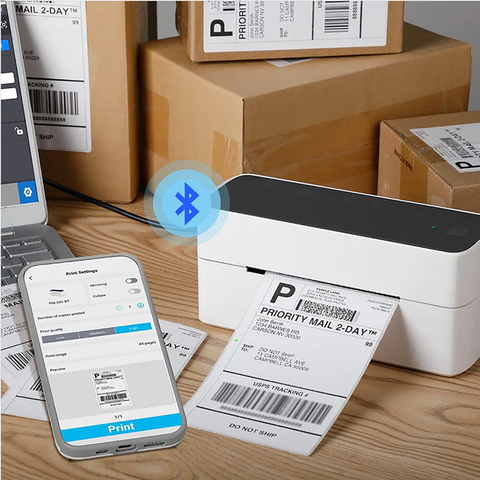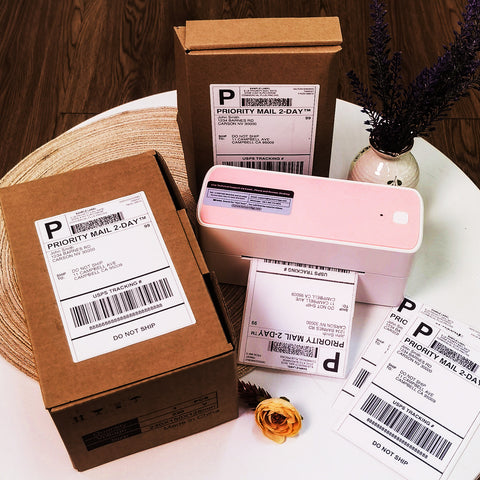For some reason, many of us stick to the same printer we've had for over a decade. But it's high time for an upgrade, and an inkless printer is a futuristic investment that can revolutionize your workspace. Keep reading to delve into the latest addition to your workstation.

What is an inkless printer?
Inkless printers rely on cutting-edge heat-based technology, bidding farewell to the bulky, toxic, and expensive ink cartridges. Instead of ink and toner, these remarkable photo printers utilize heat on special dye crystals. Moreover, these modern machines seamlessly integrate with your contemporary setup, outshining the outdated, old-school printers.
The only drawback is that standard printing paper is too thin for the heat from inkless printers, necessitating special carbon paper. However, this is a small price to pay for a convenient and eco-friendly printer that saves time and money in the long run.
Why are inkless printers eco-friendly?
A study from Science Direct emphasizes the adverse effects of ink printing on human health and the environment, citing the wastefulness of ink and toner consumption. Additionally, Phomemo highlights that ink cartridges take up to 450 years to decompose, with only a quarter being recycled. In contrast, inkless printers use fewer materials, generating minimal waste. Switching to a newer inkless model is a significant step in reducing your carbon footprint, especially if you are a frequent printer user.
Supplies for inkless printers?
If they don't use ink, what do these advanced printers use? The key difference for consumers between inkless and standard ink printers lies in the paper. Inkless printers utilize special carbon paper thick enough to withstand the heat required for the inkless printing process. The inkless printing paper, roughly the size of your hand, is perfect for a pocket printer that can produce amazing photos on the go.
Phomemo offers a diverse range of inkless thermal paper compatible with their products, including white photo paper, colored paper, and sticky photo paper for labels or wall decoration.
In summary, inkless printers require fewer supplies than standard ink printers, making them an appealing choice for consumers.

Benefits of inkless printers:
Portability: Phomemo emphasizes the portability of this new technology, especially for photo printers. Whether you are an avid traveler or not, these printers offer the flexibility to print photos anywhere, eliminating the need to visit an office supplies store.
Phomemo's products come in three sizes—small, medium, and large, with even the large size fitting easily in a backpack. With Wi-Fi and Bluetooth connectivity, Phomemo's printers are a hassle-free choice.
Ease-of-use: Being a newer technology, ink-free printers are designed with modern products in mind. Manufacturers like Phomemo and Zink provide apps that simplify printing photos and images. Most inkless photo printers are Bluetooth and Wi-Fi compatible, allowing quick sharing to computers, smartphones, and social media.
Amazing Quality: Specialized healthcare units trust thermal printing for its quality over old-fashioned inkjet technology. Ink-free printing delivers beautiful print quality for images and labels.
Eco-Friendly: Ink-free printers, whether from Phomemo or other brands, contribute to reducing the environmental impact. By avoiding ink cartridges and choosing thermal paper, you play a role in conservation.
Speed: In the fast-paced technological era, waiting for a printer to produce a single sheet is impractical. Inkless printing, thanks to the thermal-based process, creates image prints in milliseconds, ensuring swift printing of multiple photos or business cards.
Convenience: Bid farewell to untimely "no ink" messages. Apart from environmental benefits, you won't face empty cartridges at inconvenient times, making inkless printers more convenient.
Reduced Costs: Investing in an inkless printer not only saves on the printer's cost but also on ink expenses. While inkjet printers can cost over $100, inkless alternatives like Phomemo come at a more affordable price. The slightly higher cost of thermal paper balances out the overall savings.
Less Repairs: Inkless alternatives have fewer moving parts than traditional inkjet printers, resulting in fewer breakdowns, fewer jams, and less spent on repairs.
Versatility: Inkless models, with their compatibility with various paper types, offer the convenience of printing diverse images and labels. Whether you need a laminated photo or a sticky-backed label, an inkless photo printer provides versatility.
Cord-Free: The freedom from outlets, coupled with battery-powered devices, Wi-Fi, and Bluetooth capabilities, allows printing anytime, anywhere. Ink-free printer batteries can last up to a week on standby, eliminating the need for constant charging.










